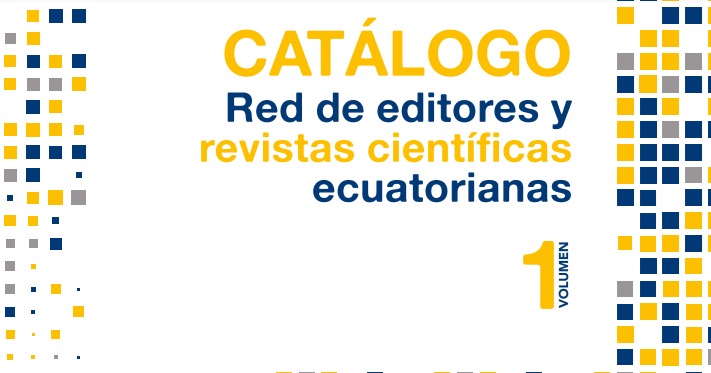COVID-19 AND HEART RATE BASED ON ANXIETY IN ADOLESCENTS WHILE PLAYING FORTNITE: ECUADOR CASE
Palabras clave:
Electronic games, sport, leisure, health, free timeResumen
The objective of the research was to investigate how the heart rate varies according to anxiety in adolescents while playing Fortnite in time of COVID-19 understood as a contagious disease that has modified lifestyles apparently developed within the contexts of everyday life. Given the emerging measures taken especially by the Ministerial Ministry of Education, face-to-face classes took on a virtual learning modality, apparently guaranteed by policies, plans and programs that guarantee learning and the use of free time. This aspect has allowed more time to be devoted to electronic games, especially fortnite, and generates anxiety. The aforementioned has been verified through a quantitative methodology based on the Hamilton Anxiety Scale. Test consisting of 14 descriptors capable of identifying both physical and psychological symptoms. Anxiety to play this video game is directly related to an increase in heart rate, it is considered a tachycardia problem when the beats per minute exceed the value of 100 in moments of sedentary lifestyle, and some of the participants in this research work exceeded this amount when playing video games. Which allowed us to conclude that being part of this virtual life for a period of time greater than two hours is harmful to health, leading to heart, respiratory and digestive problems, fatigue, exhaustion and even gradual loss of sleep.
Keywords: Electronic games, sport, leisure, health, free time.
RESUMEN:
El objetivo de la investigación fue investigar como varía el ritmo cardiaco en función a la ansiedad en adolescentes mientras juegan Fortnite en tiempo de COVID-19 entendida como una enfermedad contagiosa que ha modificado estilos de vida desarrollados aparentemente dentro de los contextos de la cotidianeidad. Ante las medidas emergentes tomadas especialmente por la cartera ministerial de Educación las clases presenciales tomaron una modalidad virtual de aprendizaje, aparentemente garantizadas por políticas, planes y programas que garantizan el aprendizaje y el uso del tiempo libre. Este aspecto ha permitido que se dedique mayor tiempo a juegos electrónicos especialmente de fortnite y se genere ansiedad. Lo mencionado se ha comprobado a través de una metodología cuantitativa basada en la Escala de Ansiedad de Hamilton. Test que consta de 14 descriptores capaces de identificar síntomas tanto físicos como psicológicos. La ansiedad por jugar este video juego está directamente relacionada al aumento de ritmo cardiaco, se considera un problema de taquicardia cuando las pulsaciones por minuto superan el valor de 100 en momentos de sedentarismo, y algunos de los participantes de este trabajo investigativo superaron esta cantidad al jugar video juegos. Lo que permitió concluir que ser parte de esta vida virtual por un periodo de tiempo superior a dos horas es perjudicial para la salud conllevando a problemas cardiacos, respiratorios, digestivos, cansancio, agotamiento y hasta pérdida gradual del sueño.
Palabras Clave: Juegos electrónicos, deporte, ocio, salud, tiempo libre.
Descargas
Citas
Inter-American Development Bank. (2020). Response to COVID-19 from science, innovation and productive development. Inter-American Improving.
Editors of May Clinic. (2018). Anxiety. Obtained from Mayo Clinic Anxiety: https://www.mayoclinic.org/es-es/diseases-conditions/anxiety/symptoms-causes/syc-20350961
Editors of Colombia. (2018). Synthesis and Metabolism of Catecholamine’s. Obtained from Synthesis and Metabolism of Catecholamine’s of Colombia: https://encolombia.com/libreria-digital/lmedicina/fisio-endocrina/fisiologiaendocrina-medula1/
Editors of the newspaper El País. (2018). 'E-sports', the Galactic’s of video games. Obtained from El País: https://elpais.com/elpais/2018/02/06/eps/1517934606_590806.html
Gutiérrez, M., Amat, J., Ruiz, A., & Sanchis, C. (2003). CARDIAC RESPONSE AS A MEASURE OF ANXIETY IN RISK SPORTS. Journal of Sports Psychology, 7-21.
Hayer, T., Kalke, J., Meyer, G., & Brosowski, T. (2018). Do Simulated Gambling Activities Predict Gambling with Real Money During Adolescence? Empirical Findings from a Longitudinal Study. Journal of Gambling Studies, 34, 929-947.
Jiménez, J., & Chacón, Y. (2012). The effect of playing videogames on social, psychological and physiological variables in children and adolescents. RETOS (21), 43-49.
King, D., Delfabbro, P., Gainsbury, S., Dreier, M., Greer, N., & Billieux, J. (2019). Unfairplay? Videogames as exploitative monetized services: Anexamination of game patents from a consumer protection perspective. Computers in Human Behavior (101), 131-143.
Mardomingo, M. (n.f). Anxiety disorder in the adolescent. Headlights HSJDBCN, 125-134.
National Assembly. (2011). Constitution 2008. Alfaro Montecristi, Ecuador: National Assembly.
Ortega, M. (2020). Effects of Covid-19 on consumer behavior: Ecuador Case. Revista de Ciencias de la Administración y Economía, 1-15.
Pinheiro, P. (2018). Tachycardia and Cardiac Palpitations. Retrieved from MD. SAÚDE: https://www.mdsaude.com/es/2016/01/palpitaciones-taquicardia.html
Puccinelli, P., Santos, T., Seffrin, A., & Barbosa, C. (2021). Reduced level of physical activity during COVID-19 pandemic is associated with depression and anxiety levels: an internet-based survey. BMC Public Health, 21(425), 1-11.
Word, H. (2020). Rolling updates on coronavirus disease (31 July2020) (COVID-19).
Descargas
Publicado
Cómo citar
Número
Sección
Licencia
Derechos de autor 2022 Revista Científica y Arbitrada de Ciencias Sociales y Trabajo Social: Tejedora. ISSN: 2697-3626

Esta obra está bajo una licencia internacional Creative Commons Atribución-NoComercial-CompartirIgual 4.0.
























